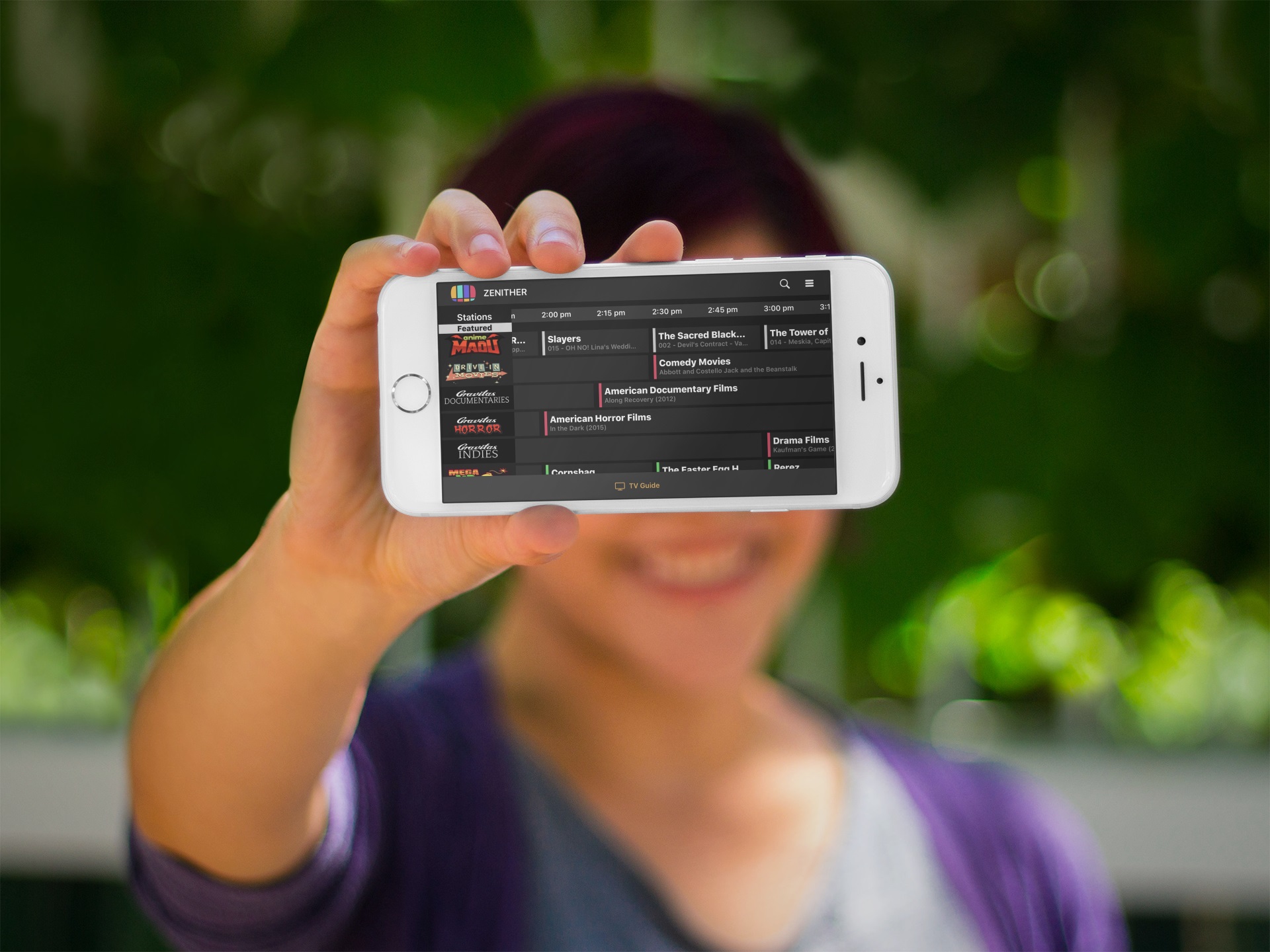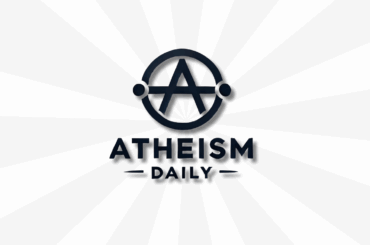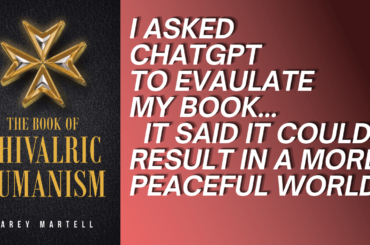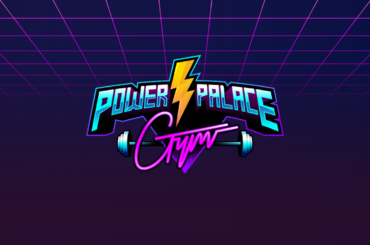As you all should be aware, come Jan 1st YouTube is implementing AI bots to go on seek and destroy missions to remove children oriented channels from their platform. Channels deemed kids content will not appear in search, will lose commenting and they will also stop notifying subscribers about new video uploads. This is not hyperbole; this is happening.
If you want to keep your businesses you have to adapt to the changing times. You need a new home for your content. Zenither could be that new home. I have written this detailed post on my blog to explain why. I strongly encourage you to read it and consider joining us while you still have the ability to ask your audiences to move with you. Come Jan 1st you will be cut off from your subscribers, and your channels will likely be removed for no longer being “commercially viable” per YouTube’s recently updated terms of service agreement.
In my previous blog article, “How YouTubers can survive the FTC COPPA Apocalypse” I encouraged YouTubers at risk of demonetization of reach out to my team at Zenither and porting their content and audiences over before Jan 1st ( which is the date when YouTube will begin mass demonetization and removal of features such as commenting and new video upload notifications, effectively making it impossible for you to communicate with your subscribers via YouTube). I explained all the reasons why things like petitions won’t work and how YouTube has chosen this method to deal with the settlement because they don’t want to actually change the ad platform they use (which is what is violating COPPA, not your channels).
What I didn’t elaborate on is the specific advantages Zenither has over YouTube (aside from that we’re COPPA compliant and want to host your content). In this article I’ll briefly summarize the goal of Zenither and why we’re a platform that YouTubers should switch to.
You may not have heard of us before, but we are not a fly by night company. It has taken 3 years and about $1.3 million USD to develop the Zenither platform. We have been issued eight patents by the USPO on our technology, and we hold two trademarks on our name and slogan, ‘Watch it all’. Please pay attention to what I write here, as if your channel is on the chopping block you need to make decisions by Jan 1st and this article will provide you a lot of information about our platform you should be aware of.
What is Zenither? How is it different than YouTube?
You can watch our animated commercial featuring our mascot character Zenny for a quick intro on who we are.
Zenither has many features in common with YouTube; we have viewer commenting on videos, activity feeds that allow a viewer to see recently released episodes from a channel they are subscribed to, and we also have merchandise shop features that allow a viewer to purchase merchandise while watching videos. We also have channel pages where viewers can subscribe to your channel, buy merchandise and watch your on demand library of content. Here’s an example of what a channel page looks like.

Next to the video player screen on Zenither you’ll find merchandise the Viewer can purchase related to the show they are watching. All merchandise is managed by the publisher of the channel; our system can support the sale of ANY kind of product, be it apparel, cosmetics, concert tickets and virtual goods. There is nothing a creator cannot sell to their audience using Zenither directly from their video watch pages. Furthermore Zenither does not take a commission on any of these product sales.
Yet with Zenither, our features are more powerful and customizable than what you’ll find available to YouTube creators.
The first big difference is channels on Zenither can create linear feeds of content and employ broadcast programming strategies, such as day parting and block programming, to suggest new videos to Viewers and make it easier for them to discover old or new content. The TV guide is the primary means of content discovery for viewers, but they also can use Search to find content by title or subject matter. They can also click directly on a Station logo from the TV guide to find its list of on demand programming and previously released episodes.
Zenither is a virtual multichannel video programming distributor (V-MVPD), which is a fancy way of saying that we provide multiple channels of video programming to consumers, similar to what a cable company does.
Zenither is unique among video streaming platforms in how it recreates the traditional cable experience by offering channels which viewers can watch and in that each channel is able to create a linear programming lineup which can be watched from the program guide. Most OTT video app platforms like Netflix and Hulu employ a format that more closely resembles a blog website, or is built around a series of playlists like a digital music player.

A screenshot of the Zenither app on Android showing the TV Guide screen that lists several linear channels from publishers such as Gravitas Ventures. Importantly DVR is never necessary since a viewer can simply scroll backward in the channel guide timeline to watch any episodes released earlier that day, and they can find previously released episodes on channel pages and search pages, too.
Zenither, like traditional MVPDs (cable and satellite TV providers), makes it easy for viewers to browse through a list of channels to select different types of programming to watch. By serving as an aggregator of content from multiple Publishers, Zenither offers content owners
a path to reach OTT (over-the-top; internet distributed content) users who have “cut the cord” without taking on the financial risk of developing their own stand-alone applications (as an example, to date we’ve spent around $1.3M developing the Zenither platform).
(To elaborate further on the development costs, there are many app providers who can use a cookie-cutter template to wrap a content owner’s videos into a mobile app, BUT the end product tends to be a generic experience with few features beyond the obvious act of watching videos. Furthermore many app makers do not produce native apps, but instead cheaper alternatives such as HTML5 hybrid apps or apps created using software such as Unity that, while can produce a rudimentary video watching app, have limited functionality and are poorly optimized for devices (such as having memory leaks that inevitably cause the apps to crash). It would be impractical, if not impossible, to develop a sophisticated video streaming platform such as Zenither using such programming short-cuts which is why Zenither only uses native apps.)
Zenither TV Stations are linear OTT channels with VOD (video-on demand) and merchandise store integration features. Unlike other linear OTT channels on services such as Sling and YouTube TV, Zenither Stations are programmed using a proprietary publishing management system which eliminates the need for traditional broadcasting equipment.

Each ‘Episode’ in Zenither is built using an ‘Episode Container’, which is an organized list of video segments which play in sequence from first to last as the episode moves down the program scheduling timeline. This manual system allows the curation of content such as pre-recorded movies, live-stream video content, station identifiers, commercial breaks and public service announcements to allow load back-to-back in order on the same station day schedule. It also allows easy management of commercial breaks by inserting ‘Ad segments’ into the Episode container template timeline, which is designated space for commercial breaks.
Whereas many other OTT channel providers such as Sling TV and YouTube TV simply repeat an existing television broadcast feed through a digital player embedded into an app, Zenither instead utilizes our patented ‘Episode Container’ system which allows dynamic insertion of ads into the linear channel feed as well as the VOD content. Furthermore Zenither Stations can easily serve customized linear channel schedules to any specific time zone in the world, meaning each market can have a different programming lineup based on its needs.
Using just a laptop, 24 different versions of a single TV channel can be created and served to any part of the world with internet access within minutes. If you have experience using social media scheduling software for Facebook, Twitter, YouTube, etc. such as Hootsuite then you will be able to intuitively understand how to use Zenither’s tools to schedule daily programming lineups for your TV station. It’s extremely easy to do.

The Station Schedule Builder incorporates an easy to use ‘drag and drop’ GUI (graphical user interface) which allows episodes to be added to customized linear program lineups for different time zones. This is useful when you do not have world-wide rights to some of the content you schedule into your station, allowing you to broadcast your station world-wide with adjustments to some of the content you show in specific regions based on your licensing rights portfolio.

The ‘auto schedule’ feature allows a publisher to select a repeating release pattern for a show. As an example with the above setup, Season 1, Episode 1 of the 8-Bit Eric show will schedule into the Sunday 6 pm timeslot on all time zone territories, meaning wherever it is 6 pm in the world someone will see the 8-Bit Eric show in the 6 pm timeslot of this channel. From November 24th 2019 until November 25th 2020, the auto schedule system will schedule episodes of the 8-Bit Eric show into the 6 pm timeslot. This scheduling of hundreds of episodes will be done in mere minutes once the publisher hits the ‘Schedule content’ button. Furthermore episodes will be scheduled in numerical order; Episode 1 the first week, Episode 2 the next week, and so on. When all episodes of Season 1 have been scheduled the system will schedule again from Episode 1, and continue repeating the Season 1 every Sunday at 6 pm in all territories until November 25th 2020.
I think it is important to point out that if you were to use traditional TV linear broadcast scheduling software purchased from a vendor so that you could do something like schedule TV shows into a linear feed for rebroadcast on something like Sling TV (or traditional cable TV) then you would need to learn a scripting language and employ that language to code out each day’s programming schedules. You would also need to construct each individual TV episode day by day, video segment by segment, for every day you want to broadcast– even if that TV episode will rebroadcast on a different day in the future. This generally means TV broadcasters employ a person just to handle all the scheduling of their linear feeds and it is a full time position, too.
Now let’s contrast this to Zenither. Using the Zenither system a publisher only needs to create the template for a TV show episode one time (the “Episode container”) and that template can be recycled many millions of times again and again while automatically generating new TV ad inventory that advertisers can purchase days, or even months in advance of the episode broadcasting / rebroadcasting. This means Zenither channel owners could participate in TV advertising upfront events, which they currently cannot do using platforms like YouTube and Twitch.
The Zenither tools are also incredibly easy to use; a social media intern with no training can publish millions of hours of content in a few hours! No scripting language required!
(Furthermore traditional TV linear broadcaster scheduling software is often tied to a specific “box” or PC built by the software vendor, and requires expensive licensing fees for a publisher to access. The Zenither broadcast scheduler tools costs nothing to access for a publisher and they are far more powerful!)
Our scheduling system can also do livestreaming, making the channel guide have a significant advantage over YouTube and even Twitch since creators who normally livestream on a consistent schedule can now show people that broadcast is coming up from the channel guide. This means on Zenither upcoming livestreams are much more discoverable than on Twitch and YouTube, making it easier for new audiences to find you. We’re also working on a tool that will make it possible for livestreamers to take a commercial break during a livestream and serve ads programmatically delivered through our ad system, which is more similar to how traditional TV live shows serve advertising (we’ve filed a patent on this technology).
Our channels can also be placed behind a paywall, requiring a viewer to pay a monthly fee to access the channels. We have pay per view and video rental features coming next year, too.
One thing to keep in mind is that the Zenither app requires geo-location data to be shared from the user to the Zenither app This is because the TV Guide works by loading channel schedules that are designed for specific time zones. If the app doesn’t know what geo-location a user is in it cannot display the correct programming schedule that is relevant to that user. This is only an issue in that people using VPNs will not be able to use Zenither but it is also a feature that is impossible for us to change, since our system relies heavily on identifying the time zone and region of the user in order to provide them with relevant content. For the majority of users of Zenither this isn’t an issue, but some users who are afraid to share their location data with us may refuse to use Zenither. It should be said that we only track to the nearest antenna receiver of a user. We don’t employ GPS tracking at the micro-scale that companies like Uber and Grubhub do, which track vehicles moving down roads. We only track to a generalized area, such as the city and country a user is in.
Who Can be a Publisher on Zenither?
The first thing to point out is that unlike YouTube, Zenither is not a user-generated platform. What this means if that not just anyone can register as a Publisher and gain the ability to create a channel. We review all applicants and form contracts directly with content owners based on their needs from us as a platform. We also screen content owners to ensure they are a legitimate business and not a pirate seeking to exploit the creative rights of others. Lastly we only work with content owners who we believe have ‘watchable content’; that is, content that has been produced at either a very professional level or content that has been proven to draw an audience.
Generally speaking we work with major and indie movie studios, and we work with YouTube creators who have at least 30,000 subscribers and are willing to bring those audiences over to their new channels on Zenither. The situation would be different if we had a large userbase on Zenither right now, but unfortunately previous YouTubers who provided us with content have not brought their audiences over to Zenither. This means we’re spending thousands of dollars a month hosting content that does not produce any revenue. This situation has to change for us to lower our requirements for YouTube creators. Once enough creators have ported over their audiences we can lower our requirements.
(As a startup we have to prioritize our resources intelligently. We cannot host channels for people who we don’t think will make any ad revenue money. We’re not a charity and we aren’t looking to become the next Vid.me who wasted millions of dollars to host millions of videos that nobody wants to watch).

We also have really cool branded t-shirts, too so that when you brag to your friends about owning your own TV network you can look stylish while doing so!
What is the Advantage of Becoming a Zenither Publisher?
As compared to YouTube, the advantages of becoming a publisher on Zenither are that you gain access to our significantly more powerful and robust scheduling features, gain access to our merchandise shop features that integrate with Shopify (and allow a publisher to sell practically anything they want with no commission paid to Zenither) and freedom from AI bots on search and destroy missions to demonetize your content. We’re never going to implement such silly nonsense on Zenither. While we have content standards (i.e. no porn) we also only work with trusted content sources who are legitimate businesses ran by professional people. YouTube is using AI because they have no idea who is uploading content to YouTube, and their overzealous AI is hurting professional content owners because that’s what AI does when you ask a computer to censor content; it starts censoring.
As a Publisher with Zenither you have access to our content management toolset which allows the creation of ‘Stations’ where users of Zenither (henceforth called Viewers) can watch your content, purchase subscriptions to premium station packages, and also purchase merchandise from your store.
There are several advantages to becoming a Publisher on the Zenither platform as compared to developing your O&O (owned and operated) video streaming application.
1. No need to develop your own application, which is both expensive and risky.
2. Zenither allows all of the content management functions of a traditional television network to be handled using nothing more than a laptop, a video hosting source and internet connection.
3. The platform brings all of the features of a conventional TV broadcaster such as CRM, billing, CDN, user analytics etc.. to an over-the-top (OTT) service. It ports over the business model of commercial broadcasting systems to the internet.
4. We are a complete solution for content creators and aggregators to create their own channels and sell their own advertisement spots, while also having the opportunity to receive carriage fees and easily license their content to other channels for second-runs showings.
5. Like a traditional MVPD, Zenither will assist channel owners with advertising their content through promotional offers and various platform features such as our recommendation engine. These efforts help market and build awareness of your content among users of our applications.
6. Unlike all of our competitors, Zenither allows a publisher to see a large amount of the demographic data we collect on viewers who watch their content. This doesn’t mean we share home addresses and names of your audience, but it does mean you can see what percentage of your viewers live in certain geographic areas, what their collective interests are, what their ages are, if they are married, single, political affiliations, employment careers, income levels, etc. etc.
By sharing this data with our publishers this allows the publisher to have meaningful conversations with advertisers so they can get a good rate for ads sold on their content and it also means the publisher can use this data to make better programming decisions in the future. As an example if a publisher notices that most of the people watching a particular show have an interest in a certain hobby then the publisher can feature aspects of that hobby in future episodes they schedule into that time slot. They can also reach out to stores that cater to those hobbies and sell advertising against that show which will be of interest to their audiences.
Compare this to YouTube’s Analytics, which only tell you age, sex and general location of your audience. Without knowing any further details it’s impossible for you to have meaningful conversations with advertisers, and it’s harder to optimize your content, too. YouTube withholds this info intentionally because they desire to control channel partners; we share it because we’re seeking a different, more positive relationship with our content partners.
What is a disadvantage to joining Zenither?
I’ll be straight with you. While Zenither is an innovative and exciting new platform that offers a lot of opportunities, the fact is that we’re also new.
We don’t have as many relationships yet built with ad agencies as YouTube does, so ad revenue will take time to grow. We also don’t have a massive built in audience, which means if you leave YouTube you need to ask your audience to subscribe to your channel on Zenither. We make this process easy because you can share a direct link to your channel page with your audience so they can easily find you.
Our publisher tools are easy to learn, but you will need to learn to use them. Mainly you need to build episode containers and schedule them if you want people to have a good experience watching your channel.
One of the biggest hurdles for YouTubers is that, well with YouTube it was the wild west of video. You could upload a video in any run time duration and never had to think about standard run times like with TV, where everything runs in multiples of 15. 15 second minimum ad run time, 15 minute minimum TV show airtime, and so forth. YouTube creators uploading their old video library may discover they need to re-edit some of their episodes to be shorter so they can have a total runtime of 30 minutes, including ads (But to be honest a lot of your videos are probably too long anyway and could use a trimming of the fat).
Generally we’ve helped a lot of creators bring their content over and not had to do any extensive editing other than cutting off things like YouTube end-cards that ran for like 5 minutes or something, to support annotations (which no longer exist on YouTube now, and which Zenither doesn’t support anyway).
All of this said, the biggest challenge is going to be actually doing the work of moving your content over and asking your audience to subscribe to your channel on Zenither. But I tell you, a lot of people are going to be really sorry they didn’t get off YouTube when they had the time to do so because come Jan 1st 2020 when YouTube drops the ban hammer on hundreds of thousands of creators because their AI bots decided your channel is too kid friendly.
How Does Zenither’s Ad System Work?
Zenither has a proprietary ad system designed to make it easy for agencies to purchase ad inventory on your channel’s linear day schedule accessed from the TV guide, as well as purchase ad inventory from your library of on demand episodes.
A more detailed description of our ad system is in the Zenither Publisher guide, but basically agencies will search for and bid on ad inventory on channels which have audiences they are looking to reach. The starting bid price for a show’s ad inventory is determined by the content owner, not Zenither. This is extremely different than how platforms like Google sell ads, where channel owners have no say in what price Google charges for your ads. With Zenither you can set the minimum CPM for your ads and control your ad inventory to ensure a return on your investment, just like actual TV networks do.
Many large YouTubers have brands and ad agencies they work with frequently to sponsor their videos. Zenither is designed to allow a publisher to send quotes for selling its channel ad inventory to an agency that registers an agency account with Zenither. This means you can negotiate your own deals with an advertiser for them to buy prerolls on your channel, without you need to go through the usual red tape process of creating and getting a sponsored video approved, which can be lengthy. You can instead control the ads that appear on your channel, and our tools make this process easy to do. You can just sell the ads the advertiser has already made on your channel; effectively, creators who switch to YouTube may never need to do a “sponsored video” ever again.
Unlike YouTube the Zenither ad system for linear channels doesn’t do targeted advertising to specific viewers, but rather allows advertisers to purchase ad inventory more like how they would from a TV network. When an advertiser buys an ad, everyone who watches that show will see the same ads — just like how traditional TV advertising works. Many advertisers prefer this model because they are trying to reach specific geographic locations the viewer is in, rather than specific types of content they want to advertise against.
Still advertisers can search for content categories and then purchase ads against specific episodes and shows, too.
Is Zenither’s Ad System COPPA Compliant?
Yes.
First of all we don’t use cookies or trackers to monitor viewer watch habits. This means we only measure the watch habits of users who are logged into an account on Zenither. Currently we have made it possible for people to watch some channels on Zenither without needing to login but this will change in the future. Regardless we’re COPPA compliant because we don’t allow minors to register accounts, and we don’t serve targeted advertising using data collected by things like cookies.
Currently we’re working to add ‘child accounts’ to user viewer accounts so that parents can create a sub-account for their child to watch Zenither on. These child accounts will not track the child’s watch data unless the parents have permitted us to do so, and it won’t serve any targeted advertising to them, either. This isn’t necessary to be COPPA compliant but is future proofing us to ensure long term compliancy with COPPA and other kinds of privacy laws.
(Please note that Google has made folks think advertisers will only pay more for targeted ads. This isn’t actually true; the most expensive advertisements are sold by TV networks who do not do targeting ads. The Zenither ad system uses the same model employed by TV networks and measures the same kinds of data, providing agencies with Gross Ratings Points for demographics and the ability to purchase ads in designated media markets. Many agencies prefer this way over how Google lists and sells their ad inventory).
How Can I Sign Up?
If you’re a YouTube creator with over 30,000 subscribers and you want to port your original content and subscribers over to Zenither before Jan 1st 2020 then please contact us via our form at https://www.zenither.com/#contact-us
Please provide a link to your current YouTube channel and any other info you think we should be aware of.
Also feel free to ask any questions in the comment section of this blog. I’m happy to answer.




